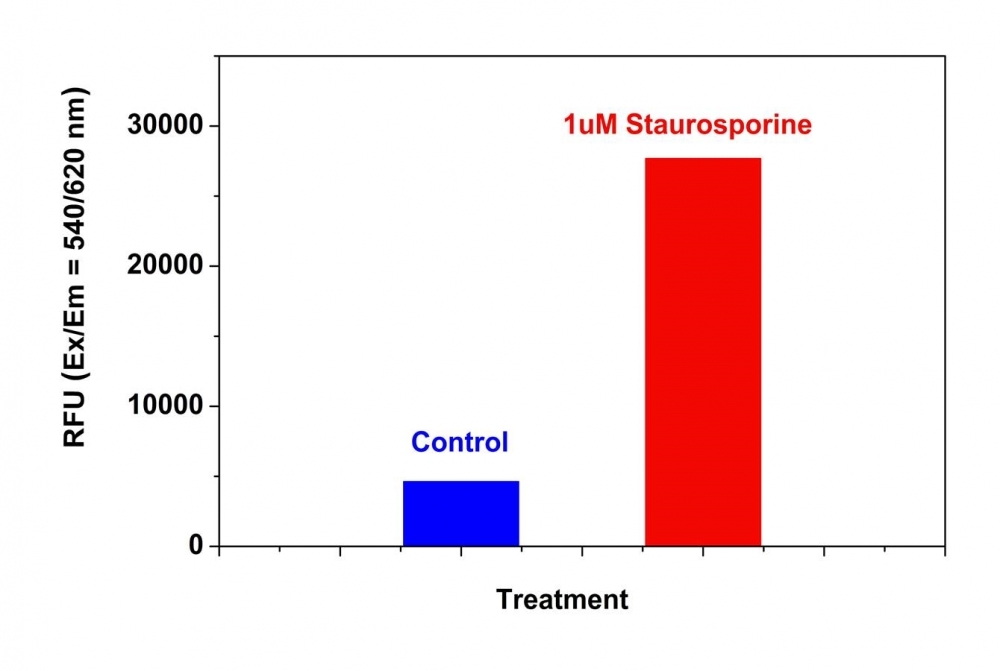Cell Meter™ Caspase 9 Activity Apoptosis Assay Kit
Red Fluorescence
Our Cell Meter™ assay kits are a set of tools for monitoring cellular functions. There are a variety of parameters that can be used. This particular kit is designed to monitor cell apoptosis by measuring caspase 9 activity. Caspase 9 is a member of the CED-3 subfamily. Activated Caspase-9 cleaves downstream caspases such as caspase-3, -6 and -7, initiating the caspase cascade. It is essential for apoptosis during normal development of the central nervous system. Caspase 9 is proven to have selectivity for the peptide sequence Leu-Glu-His-Asp (LEHD). This kit uses Ac-LEHD-ProRed™ as a fluorogenic indicator for caspase 9 activity. Cleavage of ProRed™ by caspase 9 generates strongly fluorescent ProRed™. The kit provides all the essential components. The assay is robust and can be readily adapted for high throughput screening. It can be used to either quantify the activated caspase 9 activities in apoptotic cells or screen the caspase 9 inhibitors. Quite a few labs have used this kit for high throughput screenings.


| Catalog | Size | Price | Quantity |
|---|---|---|---|
| 22817 | 100 Tests | Price |
Spectral properties
| Excitation (nm) | 532 |
| Emission (nm) | 619 |
Storage, safety and handling
| H-phrase | H303, H313, H333 |
| Hazard symbol | XN |
| Intended use | Research Use Only (RUO) |
| R-phrase | R20, R21, R22 |
| UNSPSC | 12352200 |
Instrument settings
| Fluorescence microplate reader | |
| Excitation | 540 nm |
| Emission | 620 nm |
| Cutoff | 610 nm |
| Recommended plate | Black wall/clear bottom |
| Instrument specification(s) | Top or bottom read mode |
Documents
Contact us
| Telephone | |
| Fax | |
| sales@aatbio.com | |
| International | See distributors |
| Bulk request | Inquire |
| Custom size | Inquire |
| Technical Support | Contact us |
| Request quotation | Request |
| Purchase order | Send to sales@aatbio.com |
| Shipping | Standard overnight for United States, inquire for international |
Page updated on December 15, 2025

